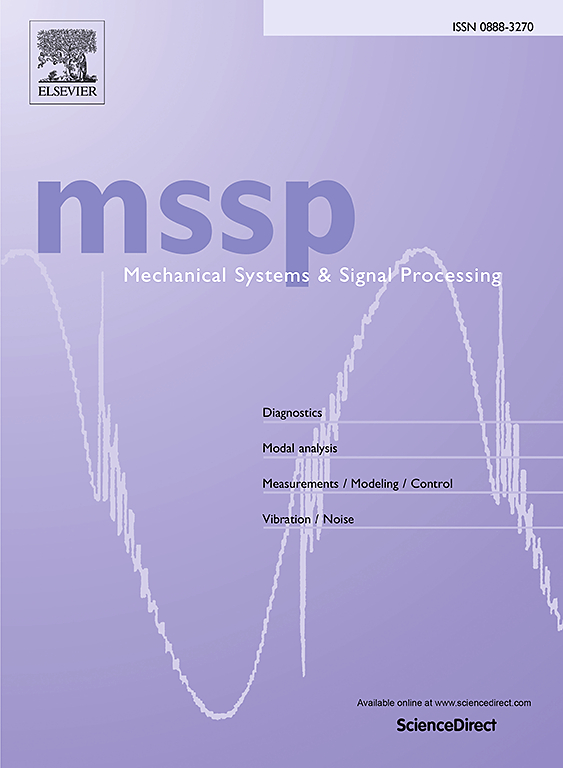基于计算机视觉和车辆动态路面信息的轮胎-路面摩擦系数融合识别框架研究
IF 7.9
1区 工程技术
Q1 ENGINEERING, MECHANICAL
引用次数: 0
摘要
轮胎-路面摩擦系数(TFC)是车辆-道路闭环系统中实现智能安全和自动驾驶功能的关键结构参数。然而,它容易受到环境条件和路面状况变化的影响,因此难以提前确定。本文提出了TFC融合识别框架,该框架主要包括基于计算机视觉的路面图像分类模块、基于车辆动态的TFC观测模块和基于可靠性因素的路面信息融合模块。首先,将全帧图像变换为8类路面和一类特殊干扰物的分块图像;然后在基于ghostnetv2的对比学习框架下,将这些块图像输入到路面块图像分类网络中。采用基于证据推理的路面块信息融合策略对分类网络的输出进行整合,得到左右两侧的分类结果,并通过映射和时空同步转化为基于计算机视觉的tfc。同时,基于轮胎力观测和改进的Dugoff模型构建了主次自适应无气味卡尔曼滤波(UKF),获得了基于车辆动力学的tfc。在此基础上,提出了基于可靠性因素的TFC融合策略,实现了两类TFC的融合。一系列的离线和现场测试表明,与基于增强技术的GhostNetV2、MobileNetV3和ShuffleNetV2下的分类网络相比,本文提出的分类网络在块图像分类任务中具有较高的精度;与单纯基于UKF和主次自适应UKF的TFC观测算法相比,本文提出的识别框架具有快速响应性和较强的鲁棒性。本文章由计算机程序翻译,如有差异,请以英文原文为准。
On the tyre–road friction coefficient fusion identification framework utilising computer vision-based and vehicle dynamics-based road surface information
The tyre–road friction coefficient (TFC) is a critical structural parameter in the vehicle–road closed-loop system for intelligent safety and automated driving functions. However, it is vulnerable to the variations of the environment conditions and road surface states, thereby difficult to be determined in advance. This article proposes the TFC fusion identification framework, which primarily comprises the computer vision-based road surface image classification module, the vehicle dynamics-based TFC observation module, and the reliability factor-based road surface information fusion module. First, full-frame images are transformed into block images of eight types of road surface and a special category of interfering objects. These block images are then fed into the road surface block image classification network under the GhostNetV2-based contrastive learning framework. The outputs of the proposed classification network are integrated using the evidence reasoning-based road surface block information fusion strategy to obtain the classification results for the left and right sides, which are subsequently converted into computer vision-based TFCs through mapping and spatio-temporal synchronisation. Meanwhile, the primary–secondary adaptive unscented Kalman filter (UKF) is constructed based on tyre force observation and the modified Dugoff model to acquire vehicle dynamics-based TFCs. The reliability factor-based TFC fusion strategy is then proposed to integrate the two types of TFCs. A series of offline and field tests demonstrate that the proposed classification network exhibits high precision in the block image classification task compared to those under GhostNetV2, MobileNetV3, and ShuffleNetV2 with augmentation techniques, and the proposed identification framework presents rapid responsiveness and strong robustness when compared with TFC observation algorithms based solely on the UKF and the primary–secondary adaptive UKF.
求助全文
通过发布文献求助,成功后即可免费获取论文全文。
去求助
来源期刊

Mechanical Systems and Signal Processing
工程技术-工程:机械
CiteScore
14.80
自引率
13.10%
发文量
1183
审稿时长
5.4 months
期刊介绍:
Journal Name: Mechanical Systems and Signal Processing (MSSP)
Interdisciplinary Focus:
Mechanical, Aerospace, and Civil Engineering
Purpose:Reporting scientific advancements of the highest quality
Arising from new techniques in sensing, instrumentation, signal processing, modelling, and control of dynamic systems
 求助内容:
求助内容: 应助结果提醒方式:
应助结果提醒方式:


